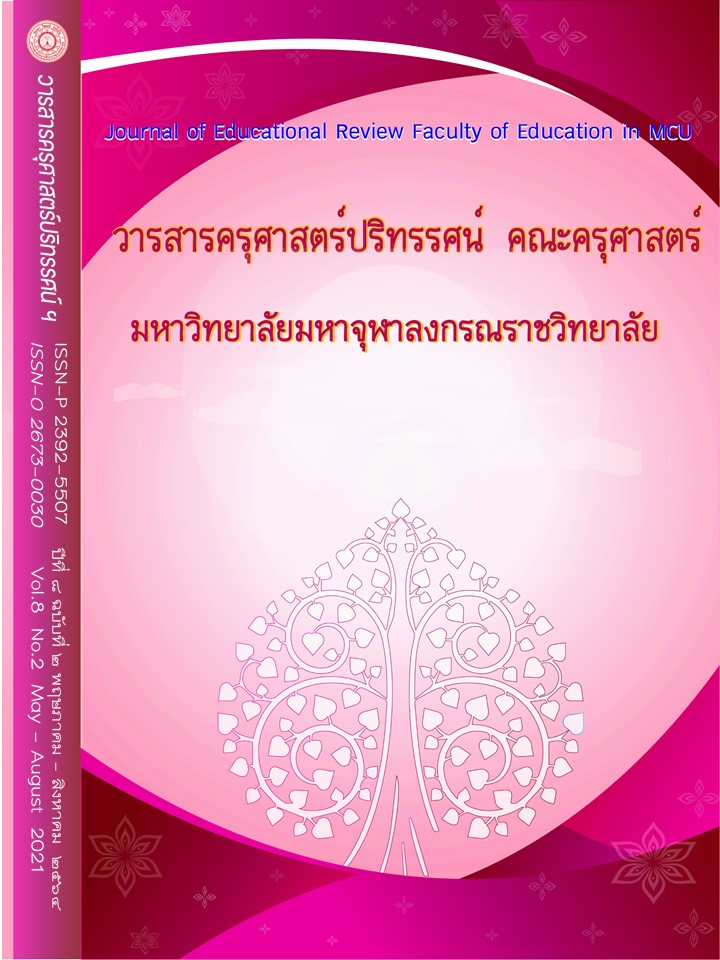การศึกษาความแตกต่างในการรักษาโรคกรดไหลย้อนของการแพทย์แผนปัจจุบันกับการแพทย์แผนไทย
Main Article Content
บทคัดย่อ
บทความวิจัยนี้มีวัตถุประสงค์เพื่อศึกษาเปรียบเทียบความแตกต่างของนิยาม ลักษณะอาการ สาเหตุการเจ็บป่วย และหลักการรักษาโรคกรดไหลย้อนของการแพทย์แผนปัจจุบันกับการแพทย์แผนไทย เป็นการวิจัยเชิงคุณภาพ คือ การวิเคราะห์เอกสารและการสนทนากลุ่ม สรุปผลการวิจัยพบว่า โรคกรดไหลย้อนทางการแพทย์แผนปัจจุบัน คือ ภาวะที่มีสารจากกระเพาะอาหารไหลย้อนขึ้นมาในหลอดอาหารทำให้เกิดการระคายเคือง มีลักษณะอาการแสบร้อนบริเวณยอดอกและเรอเปรี้ยว เนื่องจากภาวะหย่อนสมรรถภาพของหูรูดบริเวณหลอดอาหาร ทำให้กล้ามเนื้อหูรูดส่วนนี้ปิดไม่สนิทส่งผลให้น้ำย่อยในกระเพาะอาหารไหลย้อนขึ้นมาที่หลอดอาหาร โดยหลักการรักษามุ่งเน้นลดกรดในกระเพาะอาหารด้วยการใช้ยาต้านกรด การผ่าตัดซ่อมแซมหูรูด และการใช้รังสีรักษาเพื่อให้หูรูดหดแน่นขึ้น ซึ่งมีนิยามและอาการใกล้เคียงกับโรคกระษัยท้นทางการแพทย์แผนไทย ต่างกันเพียงการอธิบายสาเหตุและหลักการรักษาเพราะทางการแพทย์แผนไทยเชื่อว่าเกิดจากการกำเริบของลม ผลักดันหูรูดตอนบนของกระเพาะอาหารเปิดออก ทำให้น้ำย่อยไหลย้อนมาที่หลอดอาหาร จึงมุ่งเน้นใช้หลักการรักษาด้วยตำรับยาที่มีส่วนประกอบของยารสร้อนที่มีสรรพคุณช่วยในการสลายลมและยารสฝาดหรือยารสขมที่มีสรรพคุณช่วยดับพิษร้อนและสมานแผล และประโยชน์จากการวิจัยครั้งนี้ทำให้ทราบองค์ความรู้เรื่องโรคทางการแพทย์แผนไทยมีความชัดเจนในเชิงวิชาการ สามารถนำมาใช้ในกระบวนการเรียนการสอนเพื่อให้ได้บัณฑิตแพทย์แผนไทยให้มีคุณภาพและสามารถเป็นทางเลือกในการดูแลรักษาสุขภาพของประชาชน
Article Details
ทัศนะและความคิดเห็นที่ปรากฏในบทความในวารสารฉบับนี้ถือเป็นความรับผิดชอบของผู้เขียนบทความนั้นเพียงผู้เดียว และไม่ถือเป็นทัศนะและความรับผิดชอบของกองบรรณาธิการ
กองบรรณาธิการขอสงวนสิทธิ์ในการคัดเลือกบทความลงตีพิมพ์และจะแจ้งให้เจ้าของบทความทราบหลังจากผู้ประเมินบทความตรวจอ่านบทความแล้ว
ต้นฉบับที่ได้รับการตีพิมพ์ในวารสารครุศาสตร์ปริทรรศน์ คณะครุศาสตร์ มหาวิทยาลัยมหาจุฬาลงกรณราชวิทยาลัย ถือเป็นกรรมสิทธิ์ของคณะครุศาสตร์ มหาวิทยาลัยมหาจุฬาลงกรณราชวิทยาลัย ห้ามนำข้อความทั้งหมดหรือบางส่วนไปพิมพ์ซ้ำ เว้นเสียแต่ว่าจะได้รับอนุญาตจากมหาวิทยาลัยฯ เป็นลายลักษณ์อักษร
เอกสารอ้างอิง
กรมศิลปากร. (2542). ตำราเวชศาสตร์ฉบับหลวง รัชกาลที่ 5 เล่ม 1. กรุงเทพมหานคร: อมรินทร์พริ้นติ้งแอนด์พับลิชชิ่ง.
กรมศิลปากร. (2542). ตำราเวชศาสตร์ฉบับหลวง รัชกาลที่ 5 เล่ม 2. กรุงเทพมหานคร: อมรินทร์พริ้นติ้งแอนด์พับลิชชิ่ง.
กรมศิลปากร. (2542). ตำราเวชศาสตร์ฉบับหลวง รัชกาลที่ 5 เล่ม 3. กรุงเทพมหานคร: อมรินทร์พริ้นติ้งแอนด์พับลิชชิ่ง.
กรมสนับสนุนบริการสุขภาพ กองการประกอบโรคศิลปะ. (2549). ตำราแพทย์แผนโบราณทั่วไป สาขาเวชกรรม เล่ม 1. นนทบุรี: ไทภูมิ พับลิชชิ่ง.
กรมสนับสนุนบริการสุขภาพ กองการประกอบโรคศิลปะ. (2549). ตำราแพทย์แผนโบราณทั่วไป สาขาเวชกรรม เล่ม 2. นนทบุรี: ไทภูมิพับลิชชิ่ง.
นิตยา นามวิเศษ. (2555). การวิเคราะห์ผลการรักษาโรคเกี่ยวกับกระเพาะอาหารโดยกระบวนการรักษาด้วยตำรับยาคุมธาตุ. วิทยานิพนธ์การแพทย์แผนไทยมหาบัณฑิต. มหาวิทยาลัยราชภัฏเชียงราย.
ปารยะ อาศนะเสน. (2552). โรคกรดไหลย้อน (Gastroesophageal Reflux Disease: GERD). แหล่งที่มา http://www.rcot.org/2016/People/Detail/14 สืบค้นเมื่อ 28 พ.ย. 2563.
พระยาพิศณุประสาทเวช. (2450). ตำราแพทย์ศาสตร์สงเคราะห์ เล่ม 2. กรุงเทพมหานคร: โรงพิมพ์ศุภการจำรูญถนนอัษฎางค์.
พระยาพิศณุประสาทเวช. (2450). แพทย์ศาสตร์สงเคราะห์ เล่ม 1. กรุงเทพมหานคร: โรงพิมพ์ศุภการจำรูญถนนอัษฎางค์.
มูลนิธิสาธารณสุขกับการพัฒนา. (2559). ตำราการนวดไทย เล่ม 1. พิมพ์ครั้งที่ 5. สมุทรสาคร: พิมพ์ดี.
ศิริวรรณ เกตุเพชร. (2558). การศึกษาสมุฏฐานและหลักการรักษาโรคตามหลักทฤษฎีธาตุของพุทธศาสตร์กรณีศึกษาโรคกระเพาะอาหารเรื้อรัง. วิทยานิพนธ์การแพทย์แผนไทยมหาบัณฑิต. มหาวิทยาลัยราชภัฏเชียงราย.
สมาคมประสาททางเดินอาหารและการเคลื่อนไหว. (2563). แนวทางเวชปฏิบัติการดูแลรักษาผู้ป่วยโรคกรดไหลย้อนในประเทศไทย พ.ศ. 2563. กรุงเทพมหานคร: พริ้นท์เอเบิ้ล.
สุรเกียรติ อาชานานุภาพ. (2553). ตำราการตรวจรักษาโรคทั่วไป 2 350 โรคการดูแลรักษาและการป้องกัน. พิมพ์ครั้งที่ 5. กรุงเทพมหานคร: โฮลิสติกพับลิชชิ่ง.


